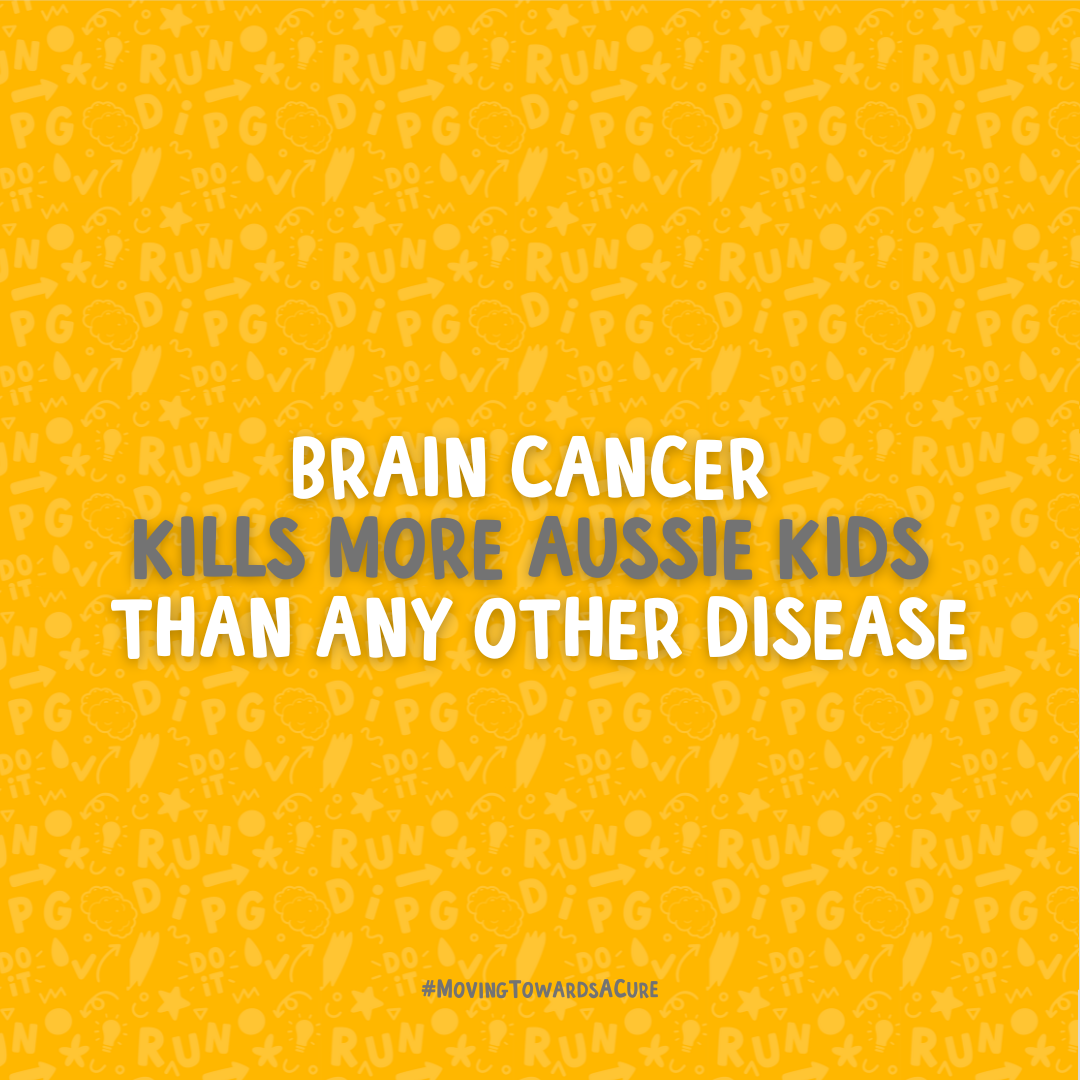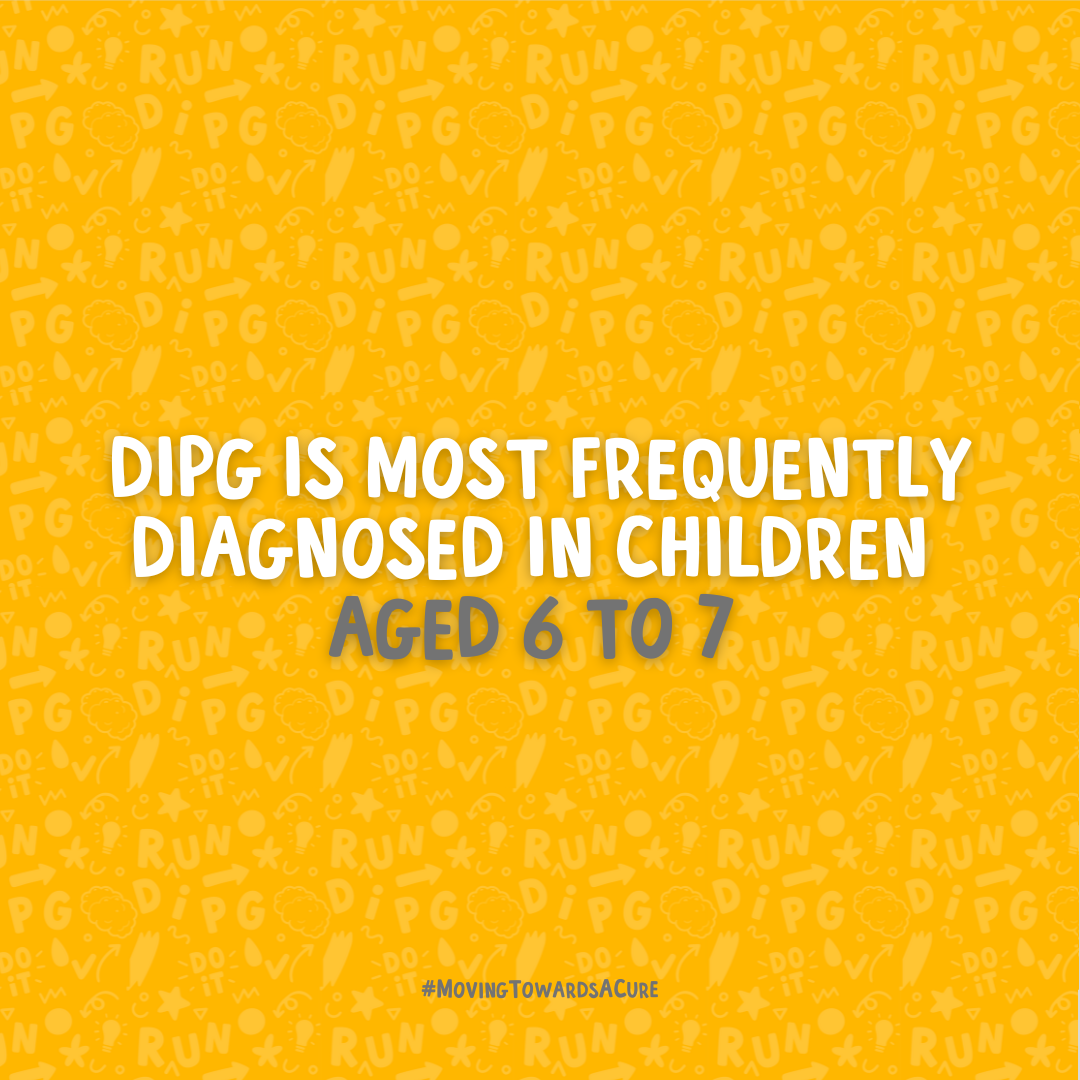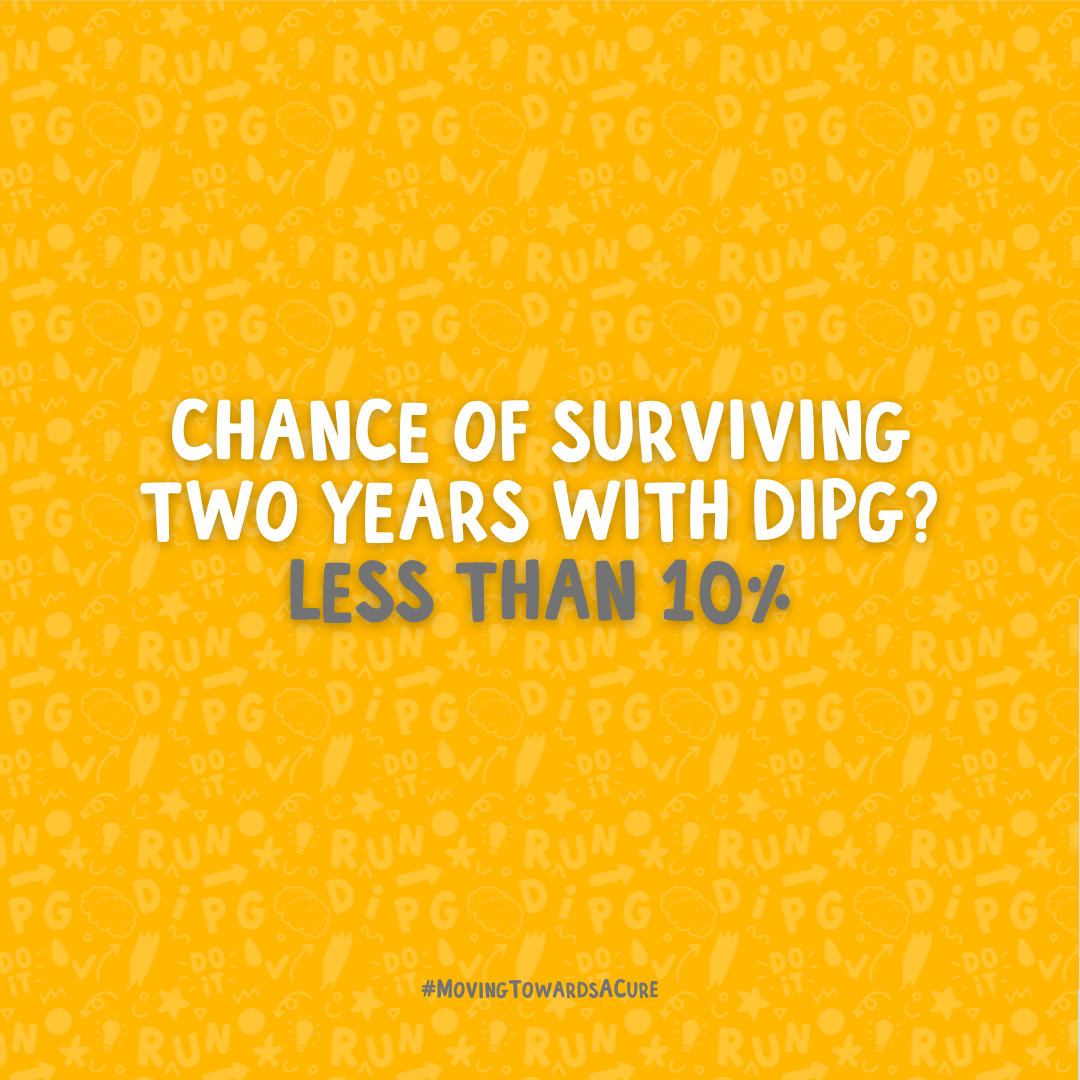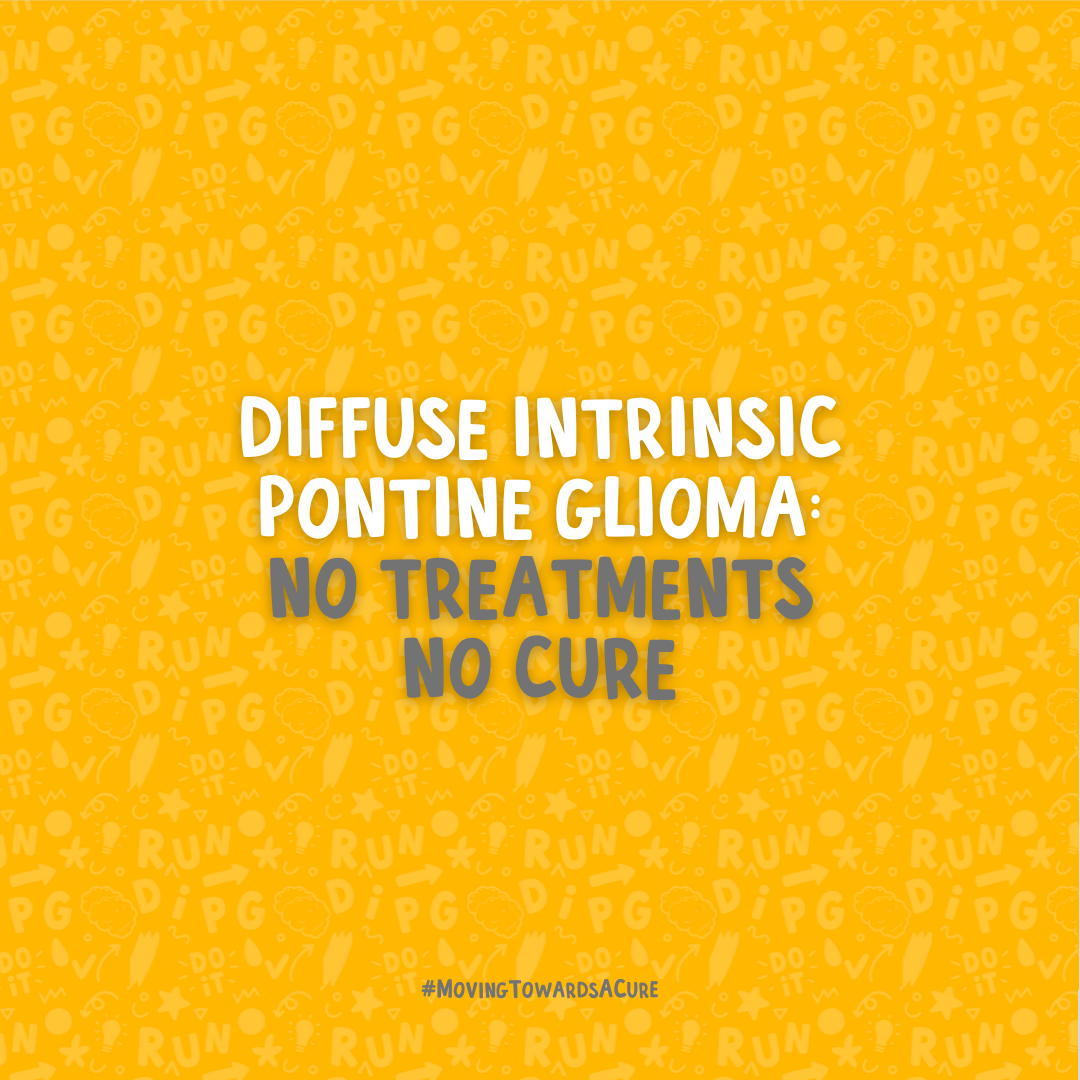What is DIPG?
DIPG, or diffuse intrinsic pontine glioma, is a type of brain tumour found in an area of the brainstem known as the pons. The name diffuse intrinsic pontine glioma describes how the tumour grows, where it is found, and what kinds of cells give rise to the tumour. DIPG is also known as diffuse midline glioma, DMG.
Diffuse
Spread throughout an area, not well contained.
Intrinsic
Forming from within growing through the brains network of neuron making it impossible to remove.
Pontine
Referring to the region of the brain known as the ‘pons’
Glioma
A tumour arising from ‘glial’ cells, the connective material of the brain.
DIPG is a type of Diffuse Midline Glioma (DMG). The difference is DIPG the tumour is entirely located entirely within the Pons region of the brain whereas DMG sections of the tumour will be located inside and outside the Pons. Both have no treatment, no cure.
Symptoms of DIPG
Symptoms of Diffuse Intrinsic Pontine Glioma typically present for approximately 1 month before diagnosis, but subtle symptoms may be present for up to 6 months prior to diagnosis. Because of their location in the brainstem, as they grow, DIPGs cause pressure on the cranial nerves that originate in the pons. These nerves control muscles used to move the eyes and the face, and to chew and swallow. Additionally, a related condition called hydrocephalus (the build-up of fluid in the brain) also increases pressure inside the skull.
The DIPG tumour itself, and especially in combination with hydrocephalus (excess fluid causing pressure), can cause the following symptoms:
- Double vision
- Difficulty in controlling eye and eyelid movement, and facial expression
- Difficulty chewing and swallowing
- Difficulty speaking
- Difficulty urinating
- Weakness in the arms and legs
- Loss of balance
- Difficulty walking
- Clumsiness
- Headaches (especially in the morning)
- Nausea and vomiting
- Fatigue
Because of the aggressive nature of DIPGs and the rate at which they grow, symptoms usually get worse quickly.
Who is Affected by DIPG?
DIPG cancer primarily affects children, with most diagnoses occurring between 6 and 9 years of age.
It makes up 10-15% of all brain tumours in children, with about 20-25 new diagnoses per year in Australia.
Unfortunately, fewer than 10% of children survive two years from diagnosis.
- Brain Cancer kills more Australian kids than any other disease, with DIPG/DMG being the single largest disease type.
- The median life expectancy post diagnosis is 9-11 months
- Currently radiation therapy is the only treatment and this a palliative.
DIPG appearance on mri
A magnetic resonance imaging (MRI) scan is the best non-invasive way to determine the size and properties of brain tumours. Because the MRI appearance of the two most common types of paediatric brainstem tumours, DIPGs and pilocytic astrocytoma’s, are so different, they can be accurately identified the vast majority of the time by MRI alone.
In rare cases where the diagnosis is uncertain based on MRI results, your doctor may order a biopsy.
The Facts of DIPG
In over 60 years of medical research the facts associated with DIPG/DMG diagnosis have not changed. Below is the harsh reality and we will continue to collaborate, partner and support anyone who holds the same belief in research.







